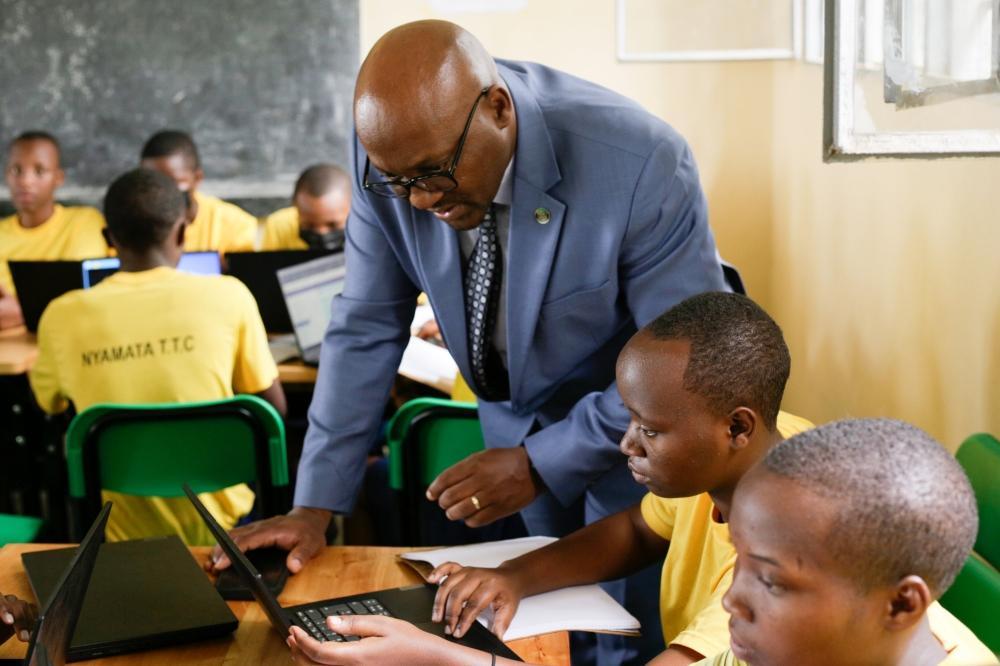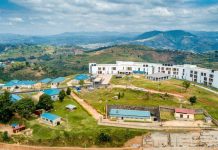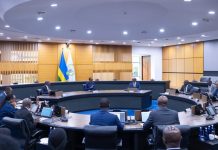Africa-Press – Rwanda. The Rwanda Education Board (REB) has shed more light on the new structure of upper secondary education, particularly the introduction of Learning Pathways set to replace traditional subject combinations starting in the upcoming academic year.
In a live-streamed session held on July 22, REB’s Deputy Director General, Flora Mutezigaju, addressed students under the theme: “Understanding Learning Pathways, Explore Your Future: Career Pathways in Secondary Education.” The session aimed to clarify changes taking effect in September 2025 and provide guidance on navigating the transition.
Why learning pathways?
Mutezigaju emphasised that upper secondary education is a pivotal stage in a learner’s academic journey. It serves both as a pre-career and pre-university phase, demanding more intentional subject choices aligned with students’ personal interests and career aspirations.
“This is the most crucial level in your education journey. At this point, you are expected to choose subjects that reflect your goals, strengths, and what you envision for your future,” Mutezigaju said.
She reminded students that lower secondary education, under the Competency-Based Curriculum (CBC), is designed as an exploration phase where learners are introduced to about 15 broad-based subjects to help them discover their interests and abilities. This foundation equips them to make informed choices when transitioning to upper secondary.
Three major learning pathways
REB has approved three key Learning Pathways for upper secondary students which are Mathematics and Science, Arts and Humanities, and Languages.
She said each pathway is designed to cater to different learner strengths and future career directions with Mathematics and Science Pathway, divided into two streams which are Stream 1: Core subjects include Mathematics, Physics, Chemistry, and Biology, supported by English, French, and Kinyarwanda.
Stream 2: Focuses on Mathematics, Economics, Geography, and Physics, with the same language support.
“This pathway is designed to equip students with analytical and problem-solving skills essential for careers in engineering, health sciences, IT, environmental sciences, data analytics, and more,” she said.
In Arts and Humanities Pathway, the main subjects include History, Literature in English, Geography, and Psychology, with Basic Math, French, and Kinyarwanda as additional subjects.
Career opportunities include law, social sciences, public policy, creative writing, community development, and education.
Lastly, Language pathway has core subjects include English, Kinyarwanda, Kiswahili, and French. Additional subjects are History, Psychology, and Basic Math.
This pathway opens doors to careers in diplomacy, translation, media, education, tourism, and human relations.
All students across pathways will also take compulsory subjects including ICT, Entrepreneurship, Religion and Ethics, Physical Education and Sports (PES), and General Studies.
Mutezigaju clarified that most of these compulsory subjects, except PES, ICT, and Entrepreneurship, will be assessed at the national level.
She highlighted that ICT will involve practical assessments, entrepreneurship will be project-based, and PES will be assessed through performance evaluations. She further said that students will take 11 subjects in total, seven core and four compulsory.
Implementation and student guidance
The implementation of these changes will begin in September 2025. Mutezigaju assured students that the transition builds on existing subject combinations and will gradually expand to ensure broader access.
“For now, the transition aligns with current school capacities. However, the goal is for each school to eventually offer at least two learning pathways to provide students with more choices,” she said.
When asked whether all schools would offer all three pathways, she explained that implementation will be phased. “We are working toward expanding options. Initially, not all schools will offer every pathway, but there is a long-term plan to ensure access to all three.”
Students concerns addressed
During the Q&A session, Joan Giramata Umuhire, who sat for national exams this year and had already chosen a subject combination, asked if she would need to reselect under the new framework.
Mutezigaju explained that students in such cases will be automatically transitioned into a corresponding Learning Pathway based on their selected combination, exam performance, and availability at their allocated school.
“For example, if a student selected MPG (Math, Physics, Geography), this corresponds to the Mathematics and Science pathway, Stream 2,” she said.
Another student, Deo Brave, asked whether all schools with A-Level would offer all three pathways. Mutezigaju clarified that while not all schools will offer every pathway immediately, the current plan is to ensure that each school provides at least two, with full implementation rolled out over time.
Planning for the Future
Mutezigaju encouraged students to choose pathways based on their strengths, interests, and career ambitions.
She shared examples of potential careers under each stream:
Math and Science – Stream 1: Doctor, Engineer, Pharmacist, Software Developer, Pilot, Data Analyst
Math and Science – Stream 2: Economist, Financial Analyst, GIS Specialist, Environmental Planner
Arts and Humanities: Lawyer, Psychologist, Historian, Social Worker, Policy Analyst
Languages: Diplomat, Journalist, Interpreter, Teacher, Hospitality Professional
“To students, these pathways are designed to help you explore your talents, build strong skills, and prepare for success in a wide range of fields. Choose wisely and intentionally,” she advised.
“To parents, support your children in making informed decisions. All pathways offer valuable opportunities, there is no better or lesser path,” she added.
As Rwanda transitions into this learner-centered model, REB continues to engage the public in discussions to ensure that learners are well-equipped to navigate the future, one pathway at a time.
For More News And Analysis About Rwanda Follow Africa-Press






